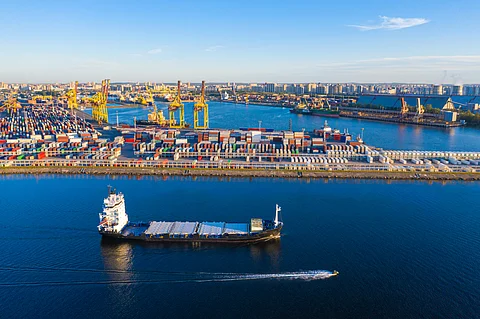

Port in Helsinki, Finland.
Photo: Adobe Stock
The European Commission has released the 2025 edition of its flagship EU Blue Economy Report, revealing that the EU's blue economy generated €250.7 billion in gross value added (GVA) and employed 4.82 million people in 2022. Preliminary estimates for 2023 indicated the blue economy was predicted to grow to reach €263 billion, with 4.88 million employed.
The EU defines its blue economy as including a wide array of maritime-related industries, such as fisheries and aquaculture, coastal tourism, maritime transport, shipbuilding, port activities and marine renewable energy. The Blue Economy Report is issued each year, based on the most recent Eurostat data, with this year's report also reviewing progress made since 2009.
The latest report shows that coastal tourism remains the largest contributor to the blue economy in the EU, accounting for 33% of total GVA and 53% of employment in 2022, while offshore wind is the fastest-growing sector, with a 42% increase in GVA compared to 2021, reaching €5.3 billion in GVA and €4.1 billion in profits in 2022.
Meanwhile, the "marine living resources" sector – encompassing fisheries, aquaculture, seafood processing, and now also blue biotechnology – generated €37.9 billion in GVA, marking a 4% increase from the previous year. Turnover reached €209.4 billion, and the sector directly employed more than 1.09 million people, a 2% rise compared with 2021.
Spain was once again the top EU employer, accounting for 18% of the total European workforce employed in the sector, followed by Germany and Italy (14% each) and France (13%).
The EU remains one of the largest consumers and importers of seafood globally. In 2022, the EU imported 6.1 million tonnes of fisheries and aquaculture products, valued at €31.9 billion, while domestic self-sufficiency declined to 37.5%.
For every 10 kilograms of fish consumed in the EU, more than six originated outside the bloc, with the processing sector relying heavily on imports, including salmon and cod from Norway and the UK, and tropical species from Asia and the Americas.
The report is released as the EU continues efforts to develop its blue economy sectors in terms of resilience and sustainability, including introducing strategic guidelines for aquaculture, and an energy transition roadmap due in 2026.
Introducing the report, European Commissioner for Fisheries and Oceans Costas Kadis noted that it is published "at a time when the EU faces significant challenges".
"Heightened geopolitical tensions, rapid technological developments and the increasingly visible effects of climate change – among other factors – require us to rethink how Europe can remain prosperous, competitive and secure in the future. Addressing these issues will be a central task for this Commission during the 2024-2029 period," Kadis stated.
In early 2025, the European Commission launched a public consultation on the Common Fisheries Policy, to help inform future policy decisions, and the bloc is also developing its flagship ocean and blue economy strategy, the European Ocean Pact, aimed at advancing sustainable ocean management and ensuring the long-term health, resilience, and productivity of the oceans.
The Commission has also recently undertaken an awareness-raising campaign on aquaculture in Europe, aiming to boost public awareness and support for the sustainable farming of fish, shellfish, and algae across the European Union.
